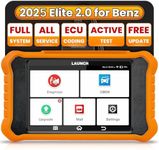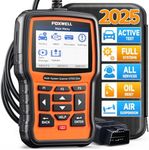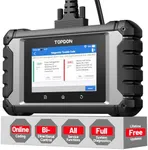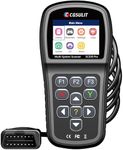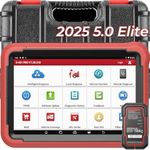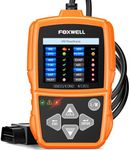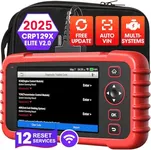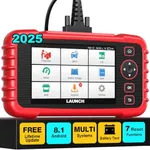Buying Guide for the Best Mercedes Obd 2 Scanners
When it comes to picking the right OBD-2 scanner for your Mercedes, it's important to understand that not all scanners are created equal. An OBD-2 scanner is a device that connects to your car's onboard diagnostics system to read and clear error codes, monitor vehicle performance, and sometimes even provide advanced diagnostics. Choosing the right scanner can help you maintain your vehicle's health, save on repair costs, and ensure that you are aware of any issues before they become serious problems. Here are some key specifications to consider when selecting an OBD-2 scanner for your Mercedes.CompatibilityCompatibility refers to whether the OBD-2 scanner can communicate with your specific Mercedes model. This is crucial because not all scanners work with all vehicles. To ensure compatibility, check if the scanner supports the specific make, model, and year of your Mercedes. Some scanners are universal and work with most vehicles, while others are designed specifically for certain brands or models. For a Mercedes, it's often best to choose a scanner that explicitly states it supports Mercedes vehicles to ensure you can access all the necessary diagnostic functions.
Diagnostic FunctionsDiagnostic functions are the various capabilities of the OBD-2 scanner, such as reading and clearing error codes, live data streaming, and advanced diagnostics like ABS, SRS, and transmission codes. Basic scanners can read and clear generic error codes, which is sufficient for simple diagnostics. More advanced scanners offer additional features like live data, which allows you to monitor real-time performance metrics, and the ability to diagnose specific systems like airbags and brakes. If you are a DIY enthusiast or a professional mechanic, you might want a scanner with more advanced diagnostic functions to get a comprehensive understanding of your vehicle's health.
User InterfaceThe user interface refers to how easy it is to use the OBD-2 scanner. This includes the display, navigation buttons, and overall user experience. A good user interface is important because it makes the scanner easier to use, especially if you are not very familiar with car diagnostics. Scanners with a clear, color display and intuitive navigation are generally more user-friendly. If you are new to using OBD-2 scanners, look for one with a simple and straightforward interface to make the diagnostic process as smooth as possible.
ConnectivityConnectivity options determine how the OBD-2 scanner communicates with your devices. Some scanners connect via a wired connection to a handheld device, while others use Bluetooth or Wi-Fi to connect to a smartphone or tablet. Wireless scanners offer more flexibility and convenience, allowing you to use your mobile device to view diagnostic information. If you prefer using your smartphone or tablet, look for a scanner with Bluetooth or Wi-Fi connectivity. For those who prefer a dedicated device, a wired connection might be more suitable.
Software UpdatesSoftware updates are important because they ensure that your OBD-2 scanner stays current with the latest diagnostic codes and features. Regular updates can improve the scanner's performance and expand its capabilities. Some scanners offer free lifetime updates, while others may require a subscription or one-time fee. To keep your scanner up-to-date and compatible with new vehicle models and diagnostic codes, choose one that offers regular and easy-to-access software updates.
Build QualityBuild quality refers to the durability and robustness of the OBD-2 scanner. A well-built scanner can withstand regular use and last longer. Look for scanners made from high-quality materials with a solid construction. If you plan to use the scanner frequently or in a professional setting, investing in a durable and reliable scanner is essential. For occasional use, a less rugged but still well-made scanner might suffice.
